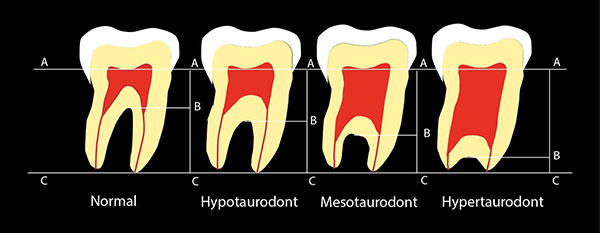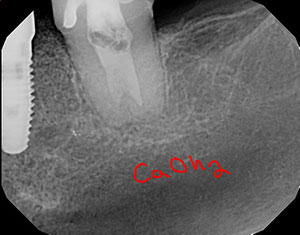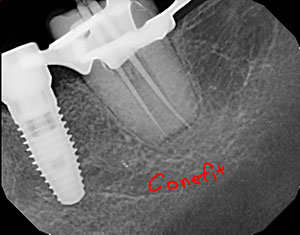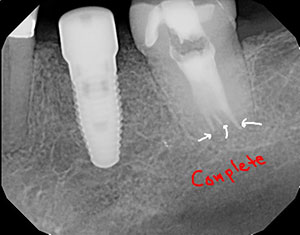
A patient came in with pain in tooth No. 18. It had a history of a small crack that resulted in needing a root canal. I radiographically examined the case very carefully. It was a taurodont—or, more specifically, a hypertaurodont.
Taurodontism is a genetic condition found in the molars where the body of the tooth and pulp chamber is enlarged vertically at the expense of the roots. As a result, the floor of the pulp and the furcation of the tooth is moved apically down the root.
 |
|
Figure 2: A normal tooth versus various types of taurodont teeth. |
These cases can be very tricky to treat. There were calcification like pulp stones present inside. I treated the case in two visits using Edge Endo X7 heat-treated files, EndoUltra ultrasonics by Vista Dental Products, full-strength sodium hypochlorite, and calcium hydroxide (Ultra-Cal) intracanal medication for two weeks. The patient returned asymptomatic.
The conefit is very challenging in these cases due to the ambiguous anatomy. This case was obturated using bioceramic sealer from Brasseler USA and gutta percha. It had three separate portals of exits.
 |
 |
|
Figure 3: Tooth No. 18 with calcium hydroxide medication placed. |
Figure 4: Conefit radiograph with gutta percha |
 |
|
Figure 5: Post-operative radiograph obturation with bioceramic sealer and gutta percha. |
Dr. Short attended the Medical College of Georgia School of Dentistry to attain a DMD degree in 1999. In 2002, he earned his postdoctorate degree in endodontics from Nova Southeastern University and then became a Diplomate of the American Board of Endodontics in 2009. Dr. Short is an expert consultant in endodontics to the Georgia Board of Dentistry, author, speaker, and assistant clinical professor at the Dental College of Georgia in Augusta. His private practice, Apex Endodontics PC, is located in Smryna, Ga. He can be reached at dr.short@yahoo.com.
Related Articles
A Short Case Study: A Root Canal Trifecta
A Short Case Study: How Often Do You Look for the MB2?
A Short Case Study: Relax, Don’t Extract!











